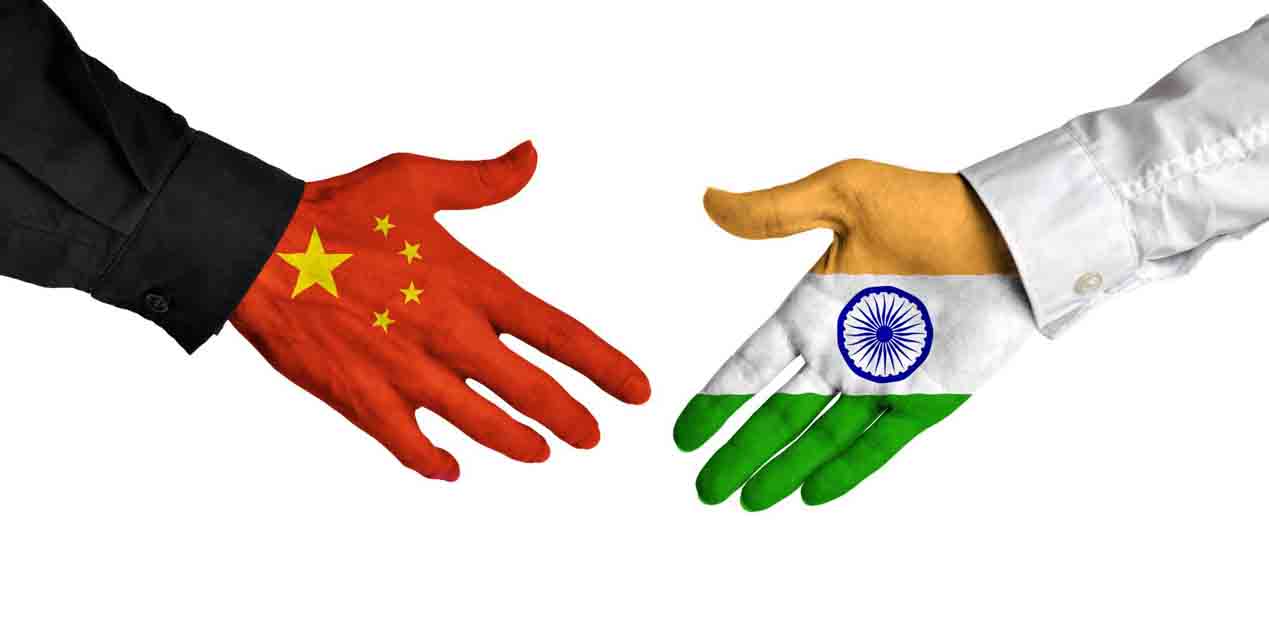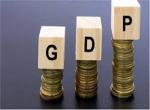The swelling trade deficit with China has emerged as key area of concern in India’s bilateral ties. Some fear a hollowing out of large segments of Indian industrial capacity. It is in this background that the fifth India-China Strategic Economic dialogue was held in Beijing on April 14, 2018. In 2017-2018, India’s exports to China was USD 10.3 billion against imports of USD 63.2 billion making a trade-deficit of USD 52.9 billion. According to the Ministry of Commerce, India’s trade deficit with China has increased more than two-fold (219 percent) from USD 16 billion in 2007-08 to 51 billion in 2016-17.1 In 1988, a Joint Economic Group (JEG) dialogue, between both Commerce and Industry, had been set up to tackle trade issues, including the widening imbalance in China's favour. The first meeting of the dialogue took place in 1989 in New Delhi.
Additionally, in December 2010 during the Chinese Premier Wen Jiabao’s visit to India, the Strategic Economic Dialogue (SED) was set up with the intention of increasing coordination on macro-economic policies and to provide a platform for both countries to leverage common interests and share their developmental experiences. This is only the second dialogue that China has with any other country other than the United States. Evidently, the dialogue has come as an acknowledgement from both sides to address the issue of the persistent and high trade deficit. It aims to look beyond the immediate bilateral issues faced by the two countries and focus on trade. Until now four meetings of the SED have been held in September 2011, November 2012, March 2014 and December 2016.
The Indian representatives at the fifth SED was led by Rajiv Kumar, Vice- Chairman, NITI Aayog, and the Chinese side of the aisle was led by He Lifeng, Chairman of Development and Reform Commission of China. This was the first dialogue after the ‘expeditious disengagement’ of troops at Doklam and it was held just a day after India’s National Security Advisor, Ajit Doval visited China from 12-13 April 2018 and met in Shanghai with Yang Jiechi, Member of Politburo and Director of the Foreign Affairs Commission of the CPC Central Committee.
Outcome of the Dialogue
The dialogue was carried out in five working groups on sectors like, infrastructure, high-tech, energy, resource conversation and policy coordination. Both sides reviewed the progress made so far and had discussions on avenues for further cooperation and collaboration.
On investments, both sides decided to indicate areas where their industry has been facing difficulties in promoting their business operations in the other country. They agreed that both sides should create mechanisms to speedily resolve those problems. On infrastructure, they discussed various areas of cooperation, including setting up of manufacturing units by Chinese companies in India instead of just selling the products or buying up existing Indian companies.
In the area of information technology and electronic hardware manufacturing, India and China have the different competitive advantage which creates many opportunities for cooperation. National Association of Software and Services Companies (NASSCOM) highlighted the opportunities for cooperation between India and China in the domain of High Technology in areas such as smart cities, digital payments, smart manufacturing. On the energy-related issue, both sides agreed for further cooperation in renewable energy, including wind and solar power, and for speeding up of cooperation in solar cell/module manufacturing in India. They agreed to cooperate in resource conservation as well. On policy coordination, both sides discussed the possibility of aligning the ‘Make in India’ initiative with ‘Made in China 2015’.2 Notably, the Indian side took this opportunity to express concerns regarding growing trade imbalance with China and huge untapped potential of India’s exports to China for which the Chinese need to address.3
During the dialogue, Indian side called for increasing the number of working groups, and for including cultural exchanges and pharmaceuticals within the discussion preview. India invited Chinese investment in affordable housing projects and made a proposal to seek China’s assistance to speed up the Bangalore-Chennai railway corridor to 150 km/h and re-development of Agra and Jhansi railway stations.4
The Chinese side raised the issue of Belt and Road Initiative (BRI) with their Indian counterparts. India reiterated its position and raised concerns over the sovereignty issue regarding the China-Pakistan Economic Corridor (CPEC). China tried to convince the Indian representatives about the positives of BRI without referring to the CPEC. The Bangladesh, China, India, Myanmar (BCIM) corridor project was also talked about. China is including BCIM in the BRI which was essentially an Indian initiative. However, Indian side reiterated its position in its interest on developing the Asian Trilateral Highway.5
Amid growing US-China trade frictions, India has offered to sell soyabean and sugar to China in response to tariffs imposed by the Chinese on US imports.6 Currently, China imports 5.82 million tonnes of soyabeans from the United States (67 percent of all imports)7 but as a countermeasure to slap the tariffs on steel and aluminum China has announced a 25 percent tariff on soyabeans. This is the first time India has made an offer to China to sell a product in case the ongoing US-China trade friction turns serious.
In addition to the SED, the 11th session of the Joint Economic Group meeting was held in New Delhi, 26 March 2018. The Chinese representatives affirmed their commitment to accelerating the provision of market access for Indian agricultural products pertaining to non-basmati rice, rape-seed meals, soya-meals, pomegranate and pomegranate arils, okra, banana and other fruits and vegetables and bovine meat.8 India pushed for greater bilateral trade in pharmaceuticals. Access to the Indian market for Chinese pears, tagetes (marigold) seeds and apple was also committed.9
It may be recalled, in the wake of the standoff at Doklam the SED was not held last year. Post-Doklam, the resumption of the SED indicates that both the countries want to move on and strengthen cooperation in trade and commerce in light of new developments taking place in world economy and the latest IMF projections for both countries. On 16 April 2018, commenting on the development of the bilateral relationship, the spokesperson of the Chinese Ministry of Foreign Affairs said, “The 11th meeting of the China-India Joint Economic Group and the 5th China-India Strategic Economic Dialogue have been successfully held and the officials of the Foreign Ministries of the two sides also exchanged visits.” She further said,” We are ready to work with India to follow through on the important consensus reached by the leaders of the two countries and stick to the right direction of our bilateral relations. We will further accumulate positive energy and expand new areas for cooperation so as to move forward the sound and steady development of bilateral relations.”
Overall, it is imperative to understand the complex nature of India-China economic linkages and explore the challenges that confront them and broaden the framework. The developments of the dialogue have further set the stage for PM Modi’s upcoming talks with the Chinese leadership.
Endnotes
1. https://www.bloombergquint.com/global-economics/2018/04/16/indias-trade-deficit-with-china-up-twofold-in-a-decade-to-2016-17-can-india-benefit-from-us-china-trade-war.
2. http://indianembassybeijing.in/economic-dia.php.
3. http://indianembassybeijing.in/economic-dia.php.
4. https://economictimes.indiatimes.com/industry/transportation/railways/india-seeks-chinas-help-for-speeding-up-of-bangalore-chennai-train-.corridor/articleshow/63771624.cms?utm_source=contentofinterest&utm_medium=text&utm_campaign=cpps.
5. https://www.hindustantimes.com/india-news/india-says-will-not-take-sides-in-us-china-trade-spat/story-CKFpSXEIHyEtZnRH5YOB5N.html.
6. https://economictimes.indiatimes.com/news/economy/foreign-trade/india-pitches-for-soybean-exports-to-china-amid-us-tradespat/articleshow/63763354.cms?utm_source=contentofinterest&utm_medium=text&utm_campaign=cppst.
7. https://www.reuters.com/article/us-china-economy-trade-grains/brazil-grabs-bigger-share-of-china-soybean-imports-from-u-s-in-january-customs-idUSKCN1G80A4.
8. http://pib.nic.in/newsite/pmreleases.aspx?mincode=16.
9. http://www.business-standard.com/article/economy-policy/india-china-to-resolve-agri-pharma-trade-issues-in-shadow-of-trade-war-118032800208_1.html.
(Views expressed are of the author and do not necessarily reflect the views of the VIF)
Image Source: https://www.yicaiglobal.com/news/chinese-commerce-ministry-feels-positive-about-economic-trade-development-india









Post new comment